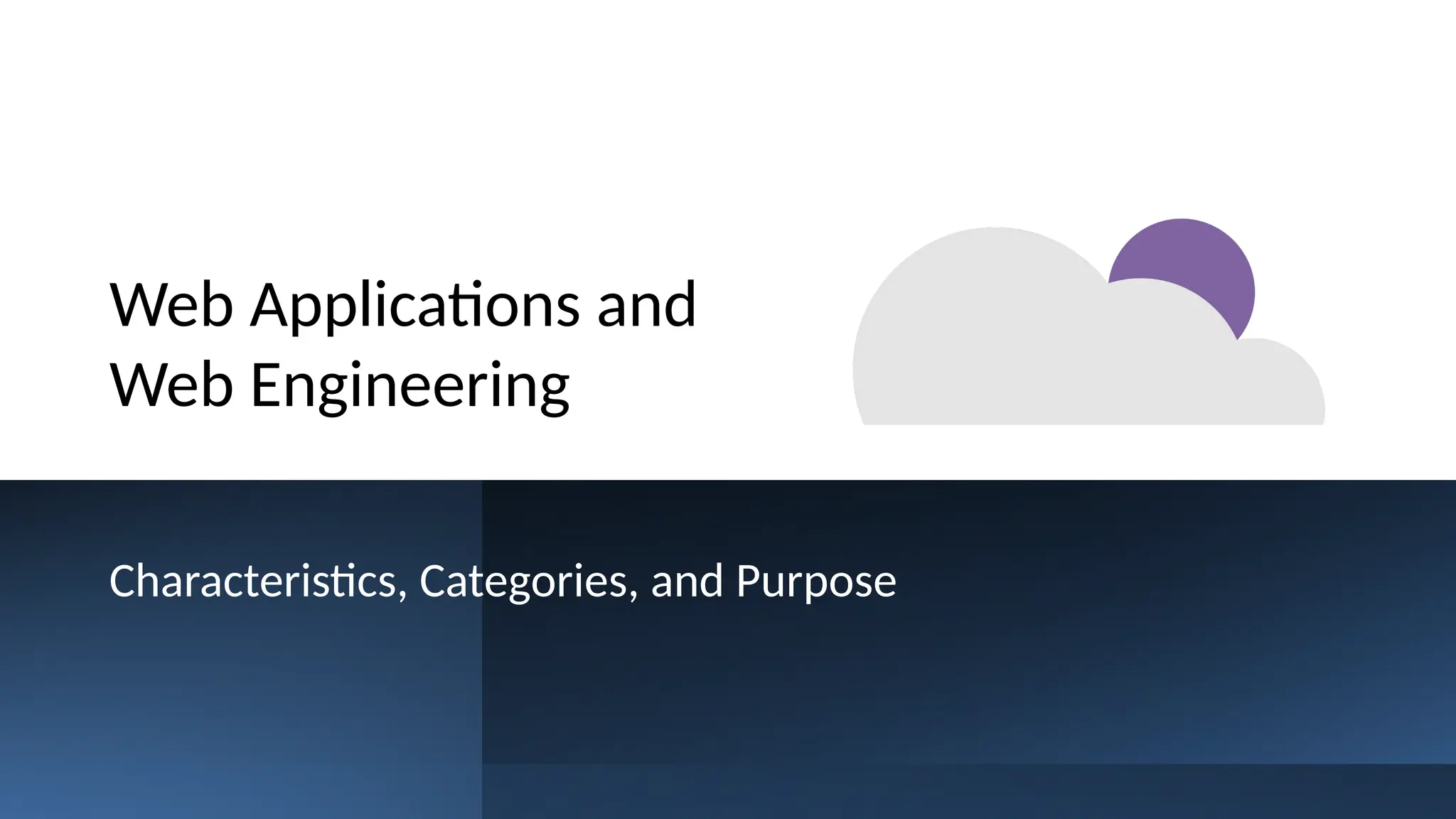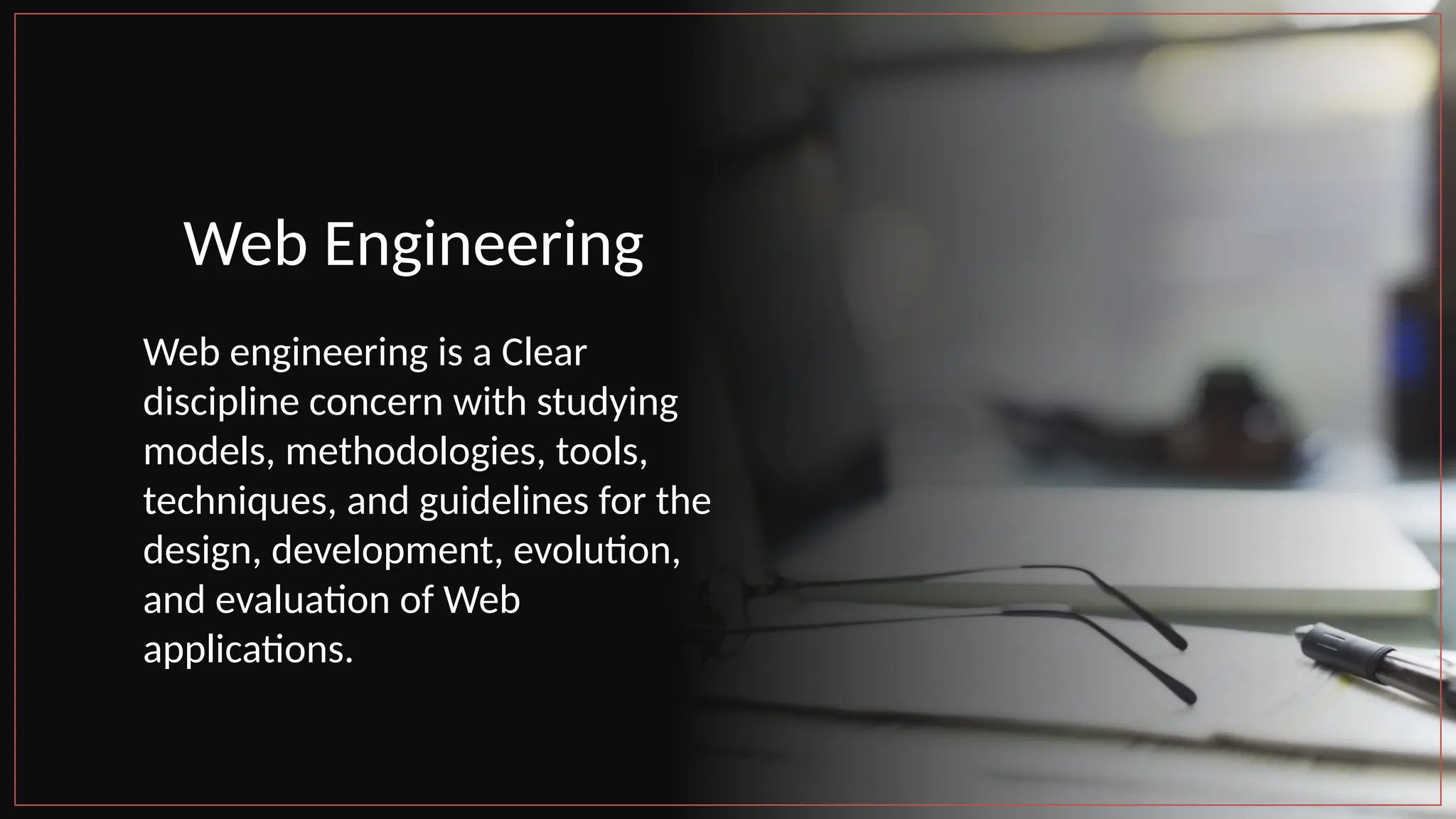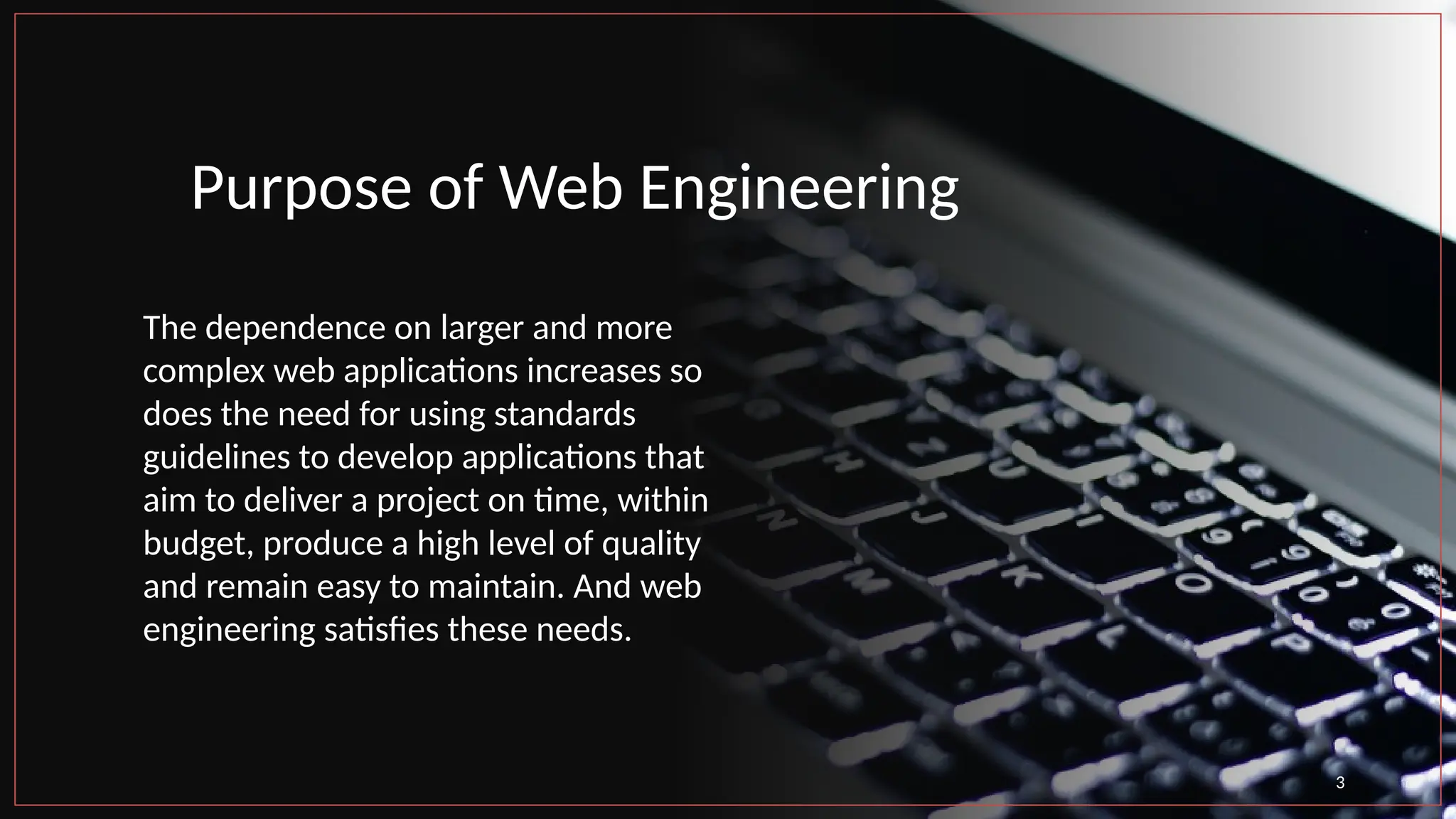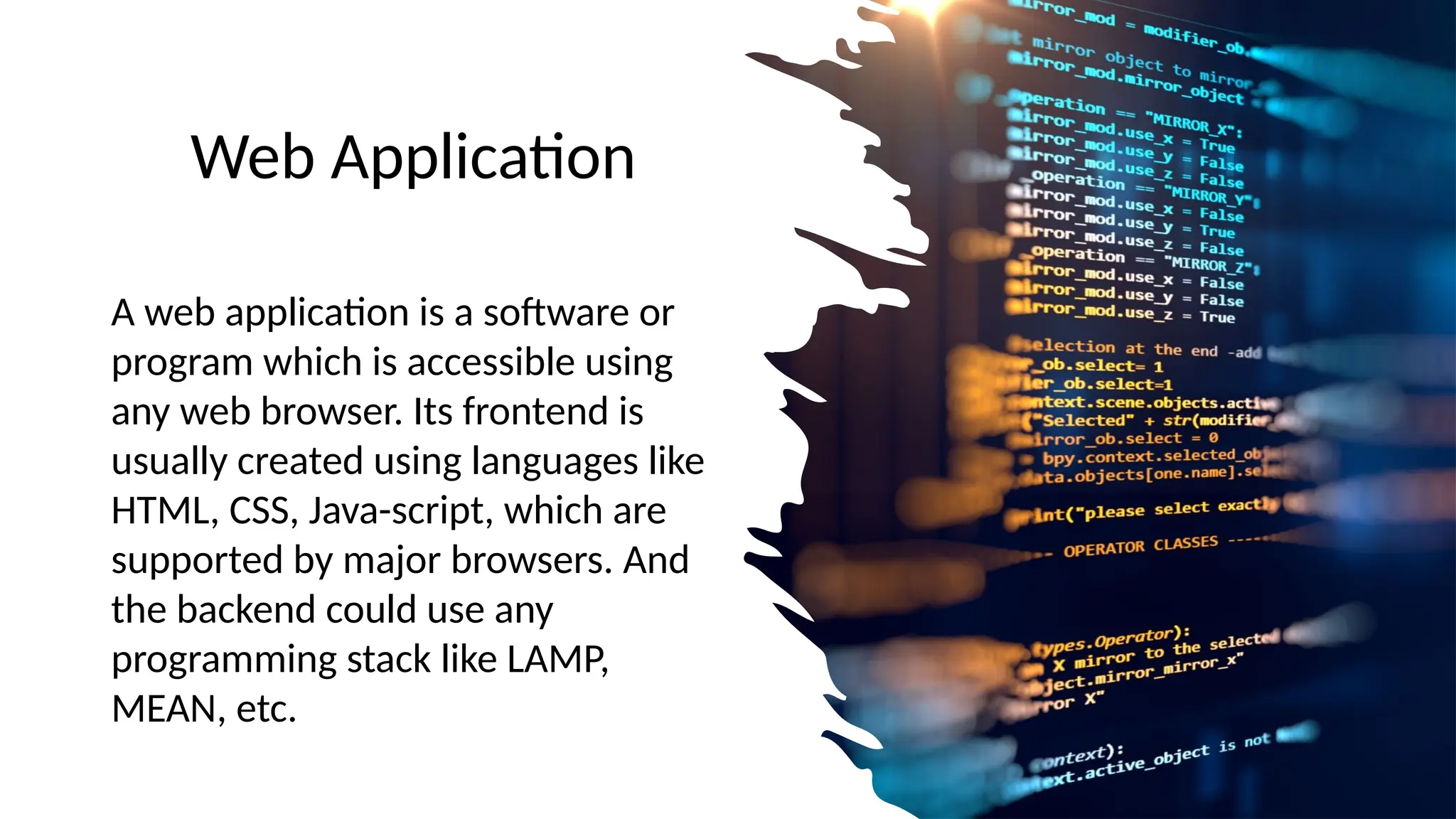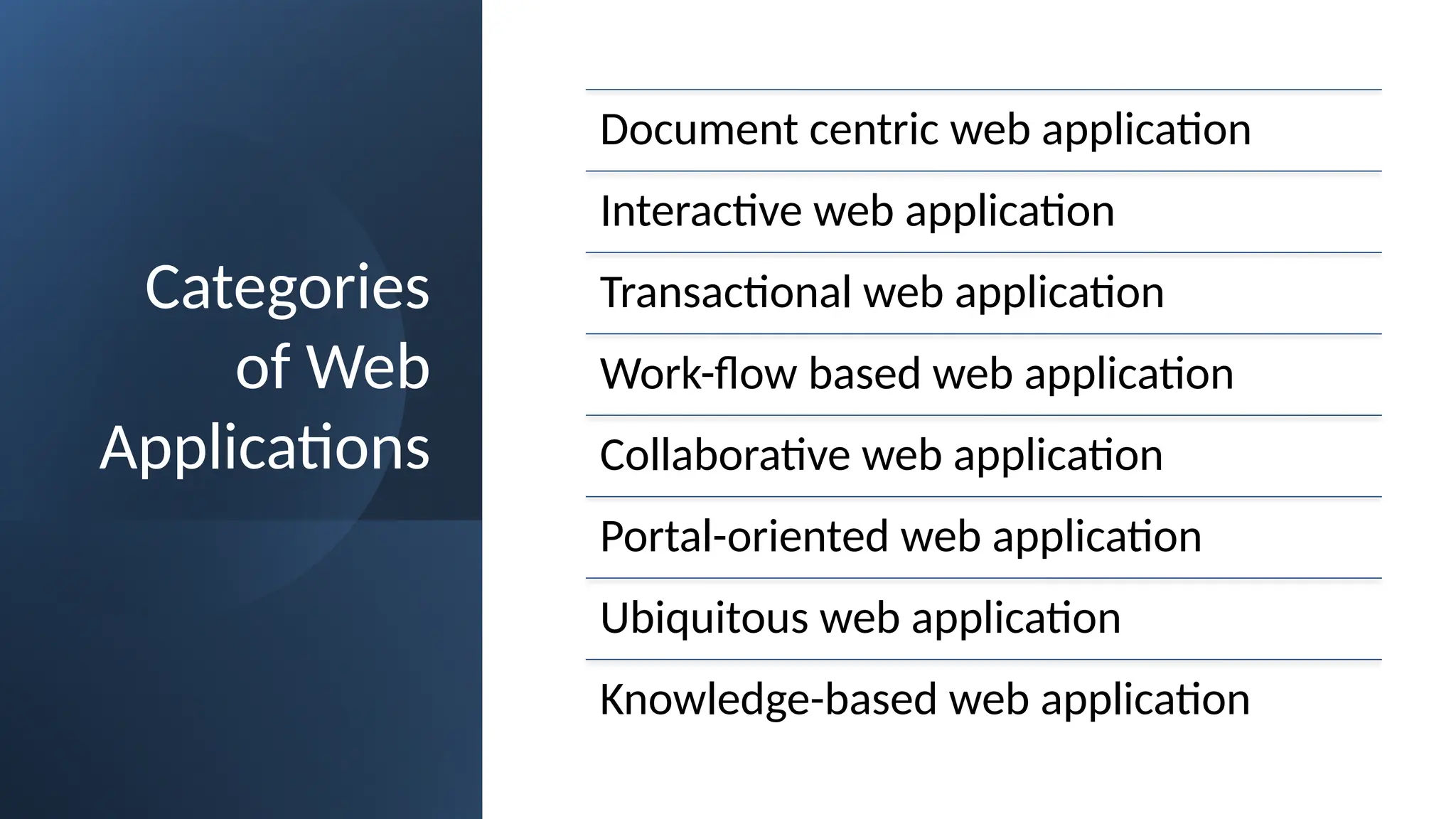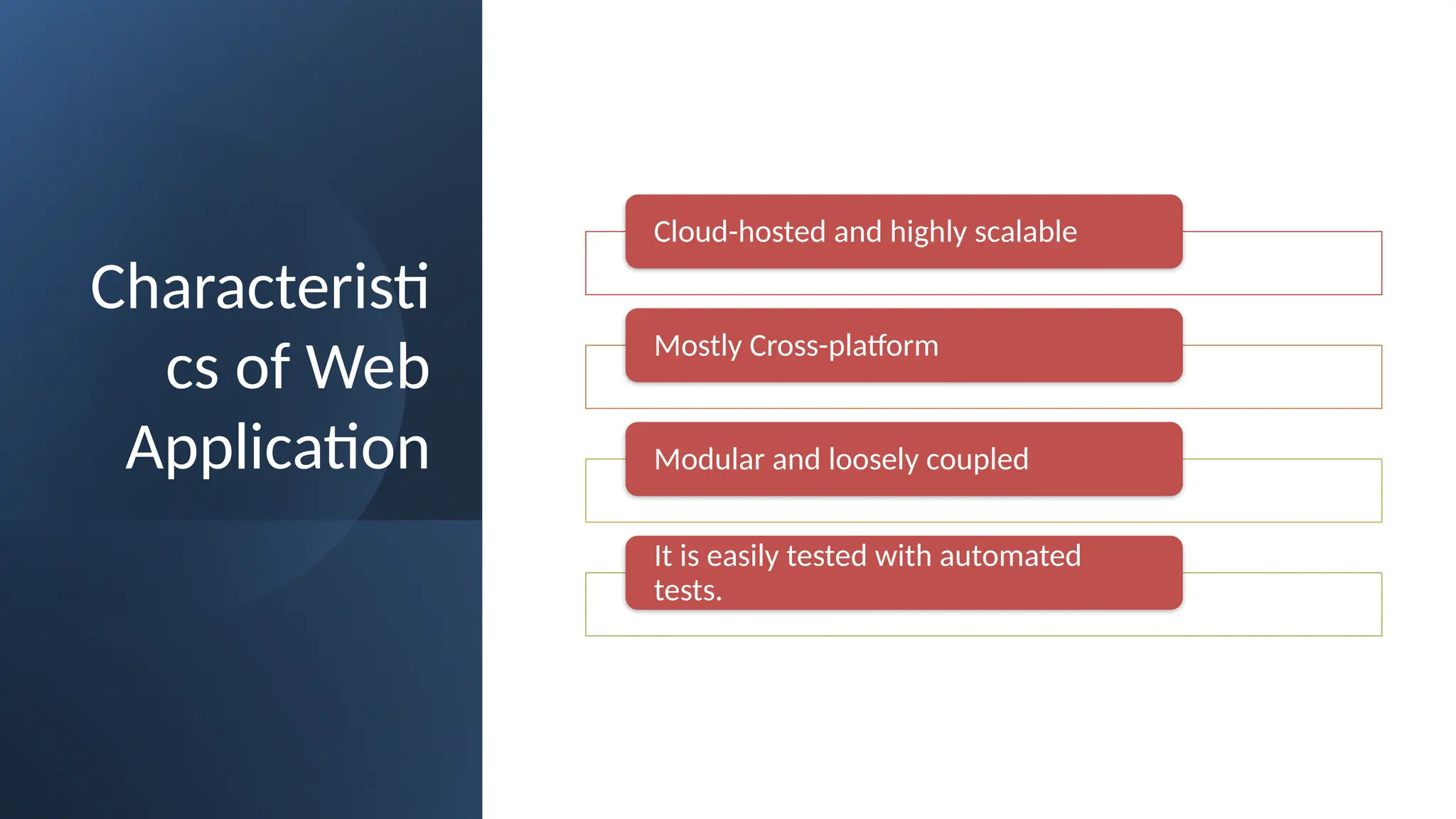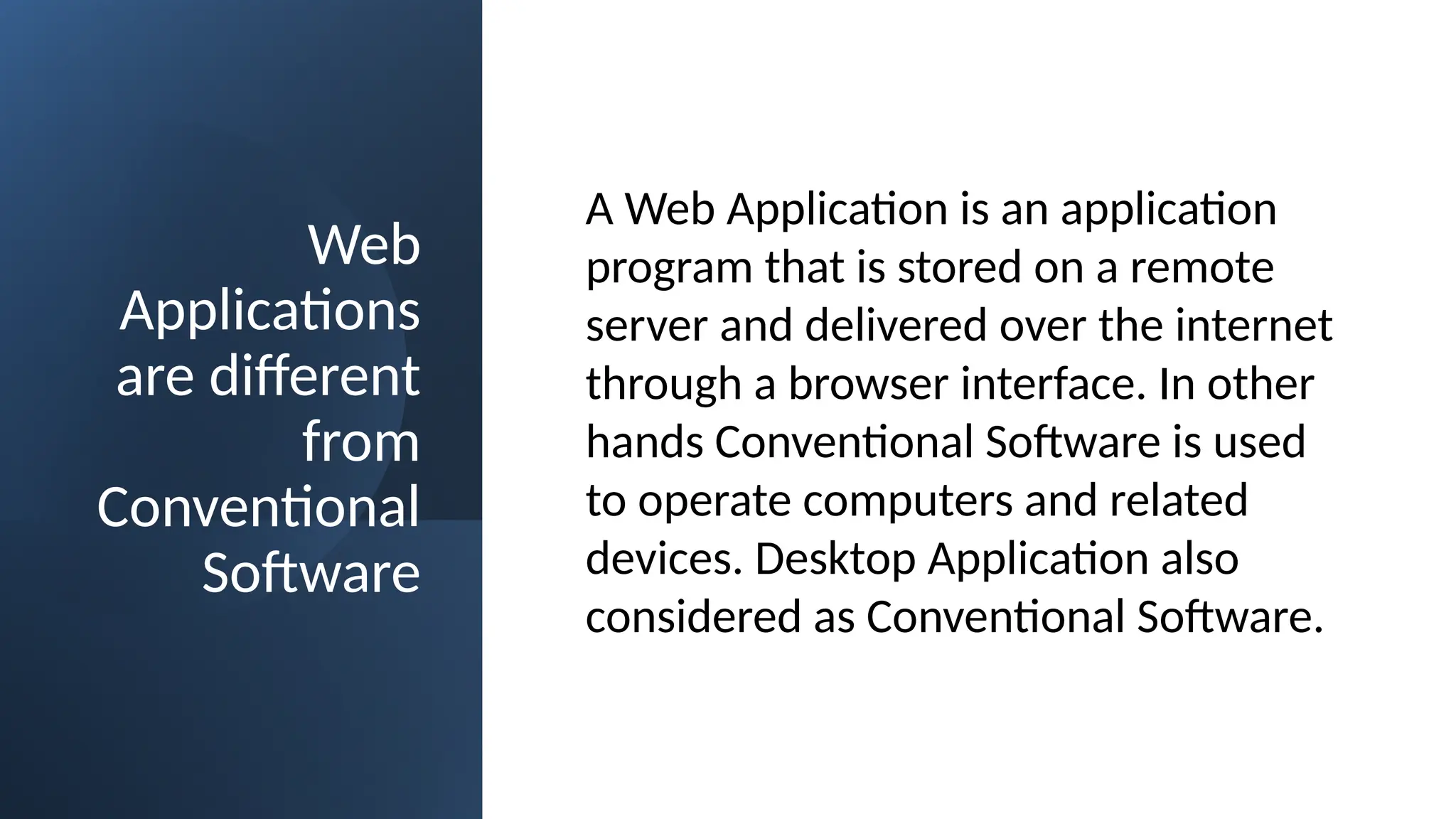Web engineering is the discipline focused on the methodologies, tools, and standards for the design and development of web applications. As web applications grow in complexity, the need for guidelines that ensure timely and quality deliverables increases. Various categories of web applications exist, each with distinct characteristics, primarily being accessible via web browsers and contrasting with conventional desktop software.
